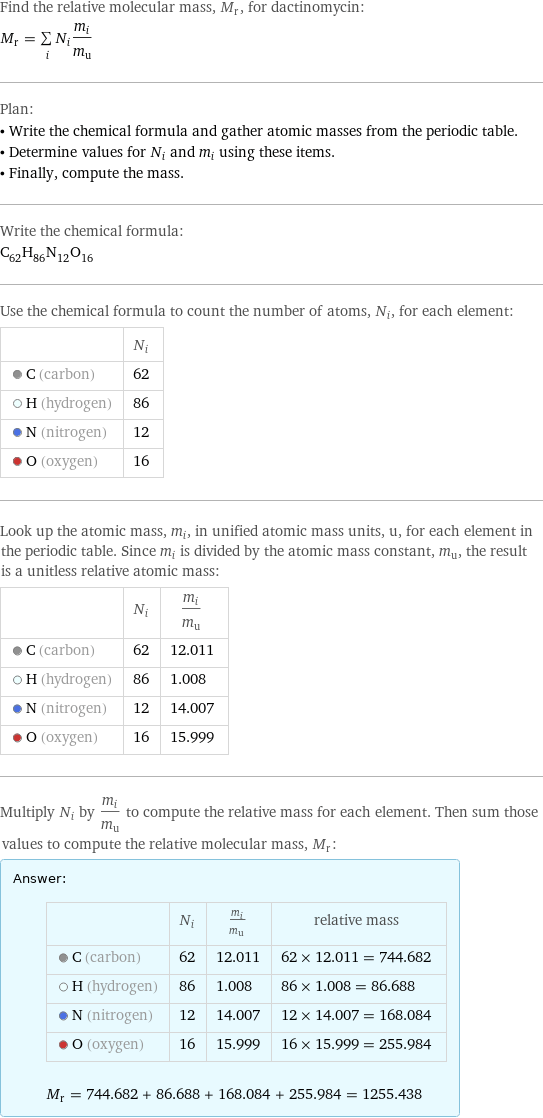Input interpretation

dactinomycin | relative molecular mass
Result

Find the relative molecular mass, M_r, for dactinomycin: M_r = sum _iN_im_i/m_u Plan: • Write the chemical formula and gather atomic masses from the periodic table. • Determine values for N_i and m_i using these items. • Finally, compute the mass. Write the chemical formula: C_62H_86N_12O_16 Use the chemical formula to count the number of atoms, N_i, for each element: | N_i C (carbon) | 62 H (hydrogen) | 86 N (nitrogen) | 12 O (oxygen) | 16 Look up the atomic mass, m_i, in unified atomic mass units, u, for each element in the periodic table. Since m_i is divided by the atomic mass constant, m_u, the result is a unitless relative atomic mass: | N_i | m_i/m_u C (carbon) | 62 | 12.011 H (hydrogen) | 86 | 1.008 N (nitrogen) | 12 | 14.007 O (oxygen) | 16 | 15.999 Multiply N_i by m_i/m_u to compute the relative mass for each element. Then sum those values to compute the relative molecular mass, M_r: Answer: | | | N_i | m_i/m_u | relative mass C (carbon) | 62 | 12.011 | 62 × 12.011 = 744.682 H (hydrogen) | 86 | 1.008 | 86 × 1.008 = 86.688 N (nitrogen) | 12 | 14.007 | 12 × 14.007 = 168.084 O (oxygen) | 16 | 15.999 | 16 × 15.999 = 255.984 M_r = 744.682 + 86.688 + 168.084 + 255.984 = 1255.438
Comparisons

≈ 1.7 × relative molecular mass of fullerene ( ≈ 721 )

≈ 6.5 × relative molecular mass of caffeine ( ≈ 194 )

≈ 21 × relative molecular mass of sodium chloride ( ≈ 58 )
Corresponding quantities

Molar mass M from M = M_uM_r: | 1.3 kg/mol (kilograms per mole)

Molecular mass m from m = M_rM_u/N_A: | 2.1×10^-21 grams | 2.1×10^-24 kg (kilograms)